Authors:
ABSTRACT
Aim
This randomised controlled trial compared the clinical effectiveness of four ion-releasing restorative materials in the proximal cavities of primary molars that underwent selective caries removal.
Results
Pulpal perforation was observed in 12 (4.58%) teeth. Six of the restored 250 teeth showed pulpal infection symptoms. A statistically significant difference was only observed between Fuji II LC and Cention N at the 3rd month, based on retention at each time interval (p=0.024). When the total retention losses at the end of the study were compared, Fuji II LC was the most successful (p<0.05). None of the restorations received a Charlie score for marginal discoloration, marginal adaptation, color stability, and anatomic form. Secondary caries and postoperative sensitivity were absent.
Conclusion
Although the superiority of materials over each other could not be proven in this study, Fuji II LC appears to be more successful in terms of retention.
Study Design
This trial enrolled 86 children (262 teeth), between 5 and 9 years old (7.15±1.14). The clinical performance of restorative materials (1:Equia Forte HT; 2: Fuji II LC; 3: Cention N; 4: ChemFil Rock), applied to the proximal cavities of primary molars following selective caries removal, were evaluated according to the modified USPHS criteria.
PLUMX METRICS
Publication date:
Issue:
Vol.26 – n.1/2025
Page:
Publisher:
Topic:
Cite:
Harvard: Z. B. Bodur, Z. Z. Ciftci, A. Cengiz, H. Karayilmaz (2025) "Clinical Evaluation of Contemporary Ion Releasing Restorative Materials in Primary Molars Subjected to Selective Caries Removal: a randomised clinical trial", European Journal of Paediatric Dentistry, 26(1), pp61-68. doi: 10.23804/ejpd.2025.2241
Copyright (c) 2021 Ariesdue

This work is licensed under a Creative Commons Attribution-NonCommercial 4.0 International License.
